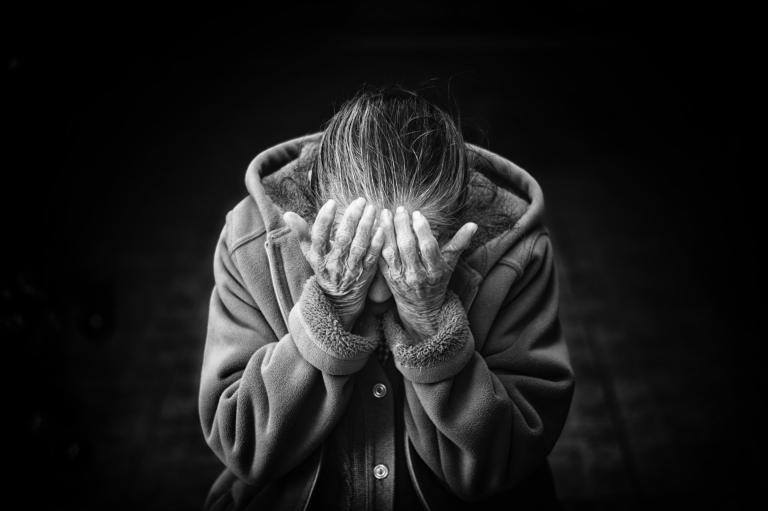If there is any passage in Paul’s letters that illustrates how hard he can be to follow, 2 Corinthians 5:6ff. may be one of the best illustrations. So, while I try to avoid using a paraphrase, in this case I think it is extremely helpful to use one. This one relies in large part on Eugene Peterson’s Message, but takes some liberties with it, as well:
Our firm decision is to work from this focused center: One man died for everyone. That puts everyone in the same boat. He included everyone in his death so that everyone could also be included in his life, a resurrection life, a far better life than people ever lived on their own. Because of this decision we don’t evaluate people by what they have or how they look. We looked at the Messiah that way once and got it all wrong, as you know. We certainly don’t look at him that way anymore. Now we look inside, and what we see is that anyone united with the Messiah gets a fresh start, is created new. The old life is gone; a new life emerges! Look at it! All this comes from the God who settled the relationship between us and him, and then called us to settle our relationships with each other.” [And now, based on that experience “God uses us to persuade [others] to drop their differences and enter into God’s work of making things right between them. [Our message is from Christ himself:] Become friends with God; he’s already a friend with you.
This rendering of Paul’s letter puts what the Apostle has to say here in sharp relief:
First: Paul works from one principle and one principle alone: Christ has died for everyone and his death puts everyone on the same footing – both in terms of their need and in terms of the way that Jesus meets that need.
There is no one who is an exception to this rule. We all need healing. Even if we cannot admit it to ourselves, we all need healing. And we all lack the ability to heal ourselves. And the only way to find healing is to embrace the Resurrection life offered in Jesus.
It is easy to imagine that it is only “other” people who need that healing. Our instinctive approach is to think that healing is something just a few people need. Our minds are populated with stories about people who are troubled in conspicuous ways: Those who cheat, steal, or kill; those who struggle to find direction in life; those who are tormented by memories that keep them trapped and embattled.
But Paul’s one and only principle is based upon the conviction that we are made in the image of God and until we live from that place, until we let life in Christ order our priorities, we all remain unhealed. The idea is that there is no life that we can live – even what we might be tempted to describe as a virtuous or industrious life that is the life for which we were made.
Reconciliation, for Paul, however, is peacemaking between what God desires for us to be and the hundred and one alternatives that we imagine for ourselves. And that is a lifelong process of discovery made possible by Jesus, whose life, death and Resurrection makes that process of discovery possible.
The second point that Paul makes is that this common ground completely changes the way that we see people. Because Jesus has made reconciliation with God and with one another possible, we can no longer take refuge in our judgments about one another as a means of navigating life.
We can no longer judge people on the basis of their outward appearance. We can no longer judge others on the basis of their accomplishments, their social status, or their value to us. Least of all can we make judgments about their value to God.
In this new order that Jesus has inaugurated, we all stand on the same ground. We are all beloved children of God. We have all been called upon to live in ways that make peace, that close the distance between ourselves and God. And, in closing the distance between ourselves and God, we are called upon to close the distance between one another.
What does this have to do with “being church?”
Well, everything, really. Because, as Paul, tells the Corinthians, “God uses us to persuade men and women to drop their differences and enter into God’s work of making things right between them.” And that can’t be done in the abstract or at a distance from a living community of faith.
So, what Paul has in mind – come to that, what Jesus has in mind – is a messy, physical reality that requires participation in the life of the church. It revolves around baptism, the celebration of the Eucharist and the vows that bind us in responsibility to one another and those to whom we invite to become friends of God.
It includes children who come forward for the Eucharist who ask for seconds on wafers. It includes adults who have one of those terrible illnesses that has robbed them of their ability to remember exactly what goes on here. It includes the hale and hearty, and those who make their way to the altar using a walker.
It involves taking the time to spend time listening to one another. Listening to stories, hopes and disappointments. It involves thinking through Scripture together and admitting the struggles we experience. We drop our prejudices and see one another differently, when we visit one another in the hospital; when we expose our fears of frailty to the frailty of our friends in Critical Care or a Trauma unit; when we take flowers and food to families who need to be reminded that they are loved. It involves celebrating and laughing with one another. It involves crying and grieving with one another.
That experience, made possible in our baptism and around an altar, cannot be phoned in or experienced at a distance. It can only be had by taking the time to listen to those who are in crisis, to those who are dying, to those who are imperiled by isolation and unemployment. This is the way that we learn to see one another differently, to treat one another differently, to be made someone who sees others anew – as objects of Christ’s love, as beneficiaries of his sacrifice.
Long before therapy, self-help, dispute resolution, or legislation, this was and remains the way in which God realizes the new life that Paul describes. It rests upon face-to-face encounters; the common ground of our dependence upon God; our share in the love of God; and our obligation to declare the love of God. It is the only way that we can and will see one another for the first time.
Together as the church, we are invited to consider how our work contributes to the healing, peacemaking, and gap-closing work that God is doing in the world. This is where we invite God to close the gap between our visions of ourselves and the vision that God has for us. This is where we invite God to heal us. This is where God invites us to embrace one another in the name of making peace with God and with one another.
Photo by Jonathan Borba on Unsplash













